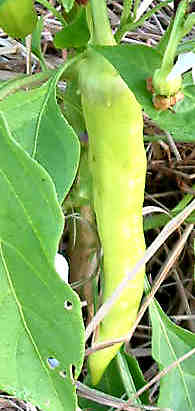Growing Banana Peppers
Growing banana peppers is really easy, as they are one of the most forgiving varieties. Still, they do need some care. Let’s take a look at growing banana peppers in the garden.
Type of Banana Peppers
 These versatile veggies go by several names, but they can be divided into two main types:Â sweet banana peppers and hot banana peppers.
These versatile veggies go by several names, but they can be divided into two main types:Â sweet banana peppers and hot banana peppers.
The most common banana pepper is called Hungarian, and it’s also available both ways. So that’s something to keep in mind when you are perusing the seeds!
The hot variety of the banana pepper reaches around 3,500 to 4,000 Scoville Units — about on par with jalapenos.
Growing Banana Peppers in Containers
Sure, you can grow these peppers in containers. For a bountiful harvest, I suggest 5-gallon containers. However, with a good potting soil, plenty of fertilizer, water and sunshine, they can also be grown successfully in 3-gallon pots.
Here’s more detailed information about container pepper growing.
Peppers in the Garden
Peppers, including the bananas, have similar requirements to their relative the tomato. That includes a fertilizer that has more phosphorus (the middle number of the fertilizer content) than nitrogen. While a lot of nitrogen will grow you large, lush plants, you won’t get many peppers off it.
Peppers like rich, well-drained soil. I’ve found that they also appreciate “fluffy” soil, which doesn’t compact easily, but which holds enough water to keep the plant happy. I do this by incorporating compost, sphagnum moss and perlite in the planting hole and surrounding soil.
Peppers like warm weather, especially the hot varieties. They don’t appreciate a windy location, so if you do get really breezy on a regular basis, see about constructing a wind break of sorts.
What About Eating?
You can eat the banana peppers when they are immature (green), ripe (red) or anywhere in between!
Here’s a hint: a sweet pepper will grow sweeter the riper it gets. Similarly, a hot banana pepper will turn up the heat, the riper it is.
Enjoy growing (and eating) your banana peppers!